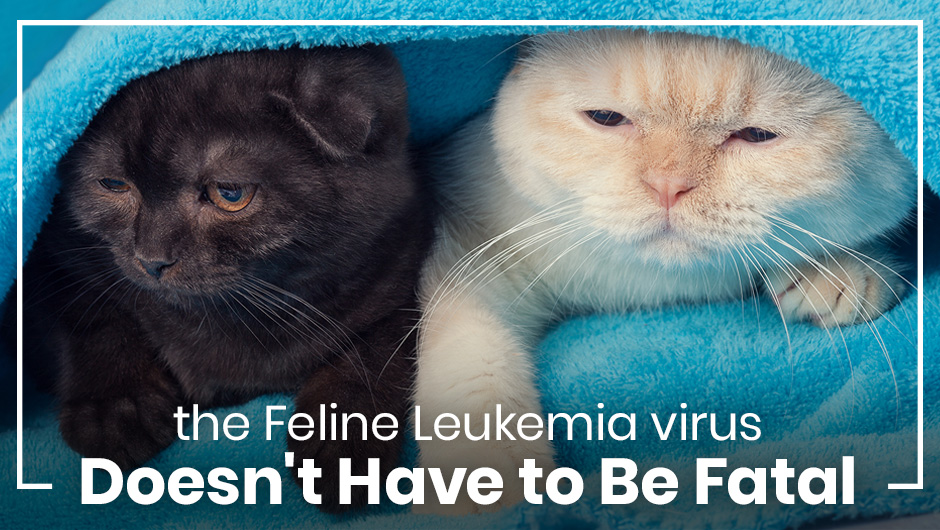Feline Leukemia Symptoms Signs, Causes, and Care
Feline leukemia, also known as FeLV, is a viral infection that affects cats worldwide. While the disease can manifest in various ways, understanding its symptoms is crucial for early detection and effective management.
Understanding Feline Leukemia
Feline leukemia is caused by the feline leukemia virus, which attacks a cat’s immune system, leaving them vulnerable to a range of health issues. It’s one of the leading causes of illness and death in cats.
Why Recognizing Symptoms Matters
Recognizing feline leukemia symptoms is vital because early intervention can make a significant difference in a cat’s prognosis. Cats can carry the virus without showing symptoms, making regular monitoring essential.

The Importance of Early Detection
Early detection allows for timely veterinary care and management strategies, which can help improve a cat’s quality of life and longevity. By being vigilant about symptoms, cat owners can take proactive steps to protect their pets.
Common Feline Leukemia Symptoms
Cats with feline leukemia can exhibit a range of symptoms, which can vary in severity and presentation. While some signs may be subtle, others are more pronounced. Here, we delve into the most common feline leukemia symptoms that cat owners should watch for.
Subtle Signs of Feline Leukemia
Feline leukemia symptoms can initially appear subtle and easily overlooked. These may include mild lethargy, a slight decrease in appetite, and occasional vomiting. Cat owners should pay close attention to any changes in their pet’s behavior and health.
Prominent Symptoms to Watch For
As the disease progresses, more prominent symptoms may become evident. These can include persistent fatigue, dramatic weight loss, and a decline in overall activity levels. Some cats may develop recurrent infections or persistent diarrhea.
Variability in Symptom Presentation
It’s important to note that not all cats with feline leukemia will exhibit the same symptoms, and the disease’s progression can vary. Some cats may remain asymptomatic carriers, while others may experience a rapid deterioration in health. Understanding this variability is key to early detection.
Physical Symptoms in Cats with Leukemia
Feline leukemia can manifest in various physical changes in affected cats. These alterations can often be observed by vigilant cat owners and should prompt further evaluation by a veterinarian.
Overview of Physical Changes
Physical symptoms of feline leukemia may involve alterations in a cat’s appearance and general well-being. These changes can be indicative of underlying health issues and should not be ignored.
Skin and Coat Abnormalities
One common physical symptom is changes in a cat’s skin and coat. You may notice hair loss, a dull or scruffy coat, or skin conditions such as sores or rashes. These can be signs of the virus affecting the cat’s immune system.
Lethargy and Weight Loss
Cats with feline leukemia often experience unexplained fatigue and weight loss. If your cat appears increasingly lethargic or loses a significant amount of weight without a clear cause, it’s essential to seek veterinary care promptly.
Behavioral and Psychological Symptoms
In addition to physical changes, feline leukemia can also manifest in behavioral and psychological symptoms. Understanding these aspects is essential for providing comprehensive care to affected cats.
Changes in Behavior
Cats with feline leukemia may undergo behavioral changes. They might become unusually withdrawn, irritable, or disinterested in their surroundings. Conversely, some cats may seek more attention and affection.
Mental Health Implications
The virus’s impact on a cat’s immune system can influence its mental health. Some cats may appear anxious or depressed, while others may exhibit signs of confusion or disorientation. Recognizing these changes can help address their emotional well-being.
Impact on Social Interaction
Feline leukemia can affect a cat’s social interactions with other cats. Infected cats may become more aggressive or territorial, leading to conflicts with other feline companions. Monitoring social dynamics is crucial in a multi-cat household.
Gastrointestinal Symptoms and Challenges
Gastrointestinal symptoms are another facet of feline leukemia. These symptoms can affect a cat’s appetite, digestion, and overall comfort. Here’s what cat owners need to know.
Digestive Issues in Cats with Leukemia
Feline leukemia can lead to gastrointestinal problems, including chronic diarrhea or constipation. These digestive issues can result in discomfort and nutritional deficiencies.
Managing Gastrointestinal Symptoms
Proper nutrition is crucial for cats with feline leukemia, especially if they experience digestive problems. Discussing dietary adjustments with a veterinarian can help alleviate discomfort and maintain overall health.
Dietary Considerations
A cat’s diet plays a significant role in managing gastrointestinal symptoms. Cat owners should seek guidance on selecting appropriate, easily digestible foods to support their feline companion’s well-being.
Respiratory Symptoms and Complications
Respiratory symptoms and complications can arise in cats with feline leukemia. Recognizing these issues is vital for timely intervention and improving a cat’s quality of life.
Breathing Problems and Leukemia
Feline leukemia can weaken a cat’s immune system, making them more susceptible to respiratory infections. Cats may exhibit symptoms such as coughing, sneezing, or labored breathing.
Respiratory Infections in Affected Cats
Respiratory infections can be a significant concern for cats with feline leukemia. These infections can lead to more severe respiratory distress, requiring veterinary care.
Respiratory Health Support
Maintaining good respiratory health is essential for cats with feline leukemia. Discuss vaccination options, regular check-ups, and strategies for managing respiratory symptoms with your veterinarian.
Neurological Symptoms and Their Implications
Neurological symptoms can occur in cats with feline leukemia, indicating the virus’s impact on the nervous system. Understanding these symptoms is crucial for early intervention and appropriate care.
Neurological Manifestations of Feline Leukemia
Feline leukemia can lead to neurological issues such as seizures, tremors, or changes in coordination. These symptoms may indicate the virus’s effect on the central nervous system.
Understanding Neurological Changes
Cats experiencing neurological symptoms require prompt attention from a veterinarian. Diagnostic tests and assessments can help determine the extent of neurological involvement and guide treatment decisions.
Neurological Support and Management
Managing neurological symptoms may involve medications and supportive care. Cat owners should work closely with their veterinarian to provide the best possible care for their feline companion.
Diagnostic Process and Identifying Leukemia
Accurate diagnosis is the first step in addressing feline leukemia symptoms. This section outlines the diagnostic process and why early identification is crucial.
Key Steps in Diagnosis
Diagnosing feline leukemia involves several steps, including blood tests and sometimes bone marrow aspiration. Understanding the diagnostic process is essential for cat owners seeking answers about their pet’s health.
Testing and Confirmation
Laboratory tests are used to confirm the presence of the feline leukemia virus. These tests can distinguish between cats with active infections, those who are carriers, and those who are unaffected.
Treatment and Management of Feline Leukemia
Once diagnosed, the management of feline leukemia is a critical consideration. This section explores various approaches to caring for cats with feline leukemia.
Available Treatment Options
Currently, there is no cure for feline leukemia, but there are strategies to manage the disease. We delve into available treatment options, including antiviral medications and supportive care.
Enhancing Quality of Life
The focus of feline leukemia management is often on enhancing a cat’s quality of life. This involves addressing symptoms, supporting the immune system, and ensuring optimal nutrition.
Supportive Care and Long-Term Management
Cats with feline leukemia require ongoing care and monitoring. We discuss the importance of regular veterinary check-ups, managing symptoms, and providing a safe and comfortable environment.
Frequently Asked Questions About Feline Leukemia
1. What is feline leukemia (FeLV)?
Feline leukemia (FeLV) is a viral infection that affects cats, compromising their immune system and potentially leading to various health issues.
2. How is feline leukemia transmitted?
Feline leukemia is primarily spread through close contact between cats, including grooming, biting, and sharing food and water dishes.
3. What are the common symptoms of feline leukemia?
Common symptoms include lethargy, weight loss, anemia, gastrointestinal issues, and respiratory problems. Behavioral changes may also occur.
4. Can feline leukemia be cured?
There is no cure for feline leukemia, but early detection and proper management can help extend a cat’s lifespan and improve their quality of life.
5. Is feline leukemia contagious to humans or other pets?
Feline leukemia is not contagious to humans, dogs, or other non-feline pets. It is specific to cats.
6. How is feline leukemia diagnosed?
Diagnosis involves blood tests, including the ELISA test, to detect FeLV antigens. It may require further confirmation through additional tests.
7. Can cats with feline leukemia live with non-infected cats?
Cats with feline leukemia shouldn’t live with non-infected cats, as it increases the risk of transmission.
8. Are there treatments available for feline leukemia?
While there is no cure, treatment options include antiviral medications, supportive care, and addressing specific symptoms.
9. Should I vaccinate my cat against feline leukemia?
Cats at risk of exposure, such as outdoor cats or those in multi-cat households, may benefit from feline leukemia vaccination. Consult your vet for guidance.
10. How can I protect my cat from feline leukemia?
Protecting your cat involves keeping them indoors, getting them tested for FeLV, providing regular veterinary care, and practicing responsible pet ownership.
Conclusion:
In this concluding section, we summarize key takeaways from the article and emphasize the importance of informed and responsible cat ownership. We recap the essential points covered in the article, including recognizing symptoms, seeking timely veterinary care, and practicing preventative measures. Advocating for feline health involves spreading awareness about feline leukemia, supporting research efforts, and promoting responsible pet ownership. Cat owners play a crucial role in protecting their pets and the feline community.




